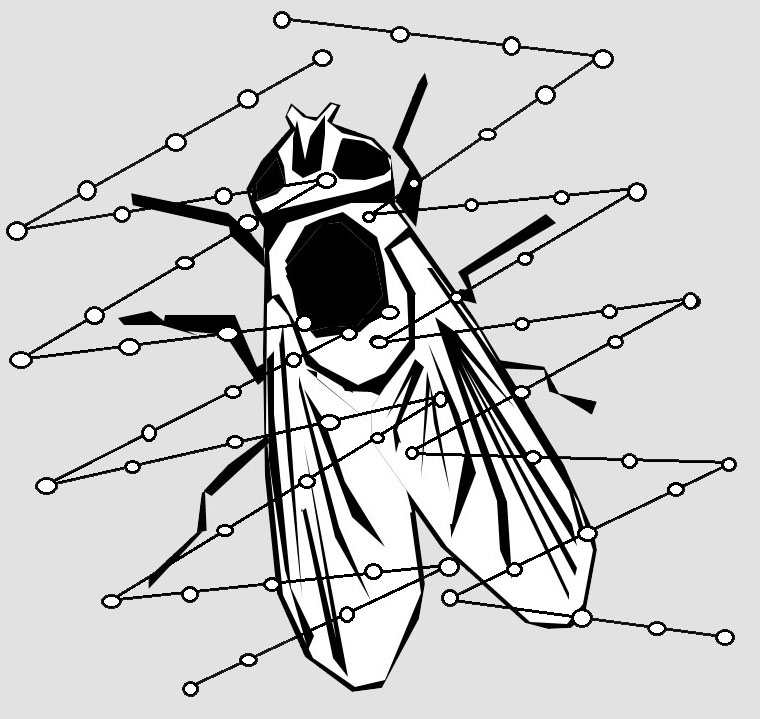Scytodes Thoracica on:
[Wikipedia]
[Google]
[Amazon]
''Scytodes thoracica'' is a
 In contrast to the pseudoscorpions that use the silk from the cephalothorax glands to make nests, the spitting spider uses it to catch prey in a very particular way. It is a very slow hunter as its long and tender legs may suggest. During night, when some insects are less active, Scytodes starts its hunt. The spider sneaks very carefully towards its prey and, from about , stops and carefully measures the distance to its prey with one front leg without disturbing it. Then it squeezes the back of its body together and spits two silk threads, in 1/600 s, in a zigzag manner over the victim. The prey is immediately immobilized. When the prey is larger the spider spits several times. It is assumed the spider uses special long hearing hairs located at its legs to locate its prey.
In contrast to the pseudoscorpions that use the silk from the cephalothorax glands to make nests, the spitting spider uses it to catch prey in a very particular way. It is a very slow hunter as its long and tender legs may suggest. During night, when some insects are less active, Scytodes starts its hunt. The spider sneaks very carefully towards its prey and, from about , stops and carefully measures the distance to its prey with one front leg without disturbing it. Then it squeezes the back of its body together and spits two silk threads, in 1/600 s, in a zigzag manner over the victim. The prey is immediately immobilized. When the prey is larger the spider spits several times. It is assumed the spider uses special long hearing hairs located at its legs to locate its prey.
Photographs of ''Scytodes thoracica''
Scytodidae Spiders described in 1802 Spiders of Asia Spiders of Europe Spiders of New Zealand {{Araneomorphae-stub
spitting spider
Spitting spiders (Scytodidae) is a family of Araneomorphae, araneomorph spiders first described by John Blackwall in 1864. It contains over 250 species in five genus, genera, of which ''Scytodes'' is the best-known.
Description
Like Sicariidae, ...
, so called because it spits a venomous sticky silken substance over its prey. Its size ranges between . The carapace
A carapace is a Dorsum (biology), dorsal (upper) section of the exoskeleton or shell in a number of animal groups, including arthropods, such as crustaceans and arachnids, as well as vertebrates, such as turtles and tortoises. In turtles and tor ...
is unusual in sloping upwards towards its rear end, whereas the abdomen slopes downwards.
It has six eyes instead of the eight spiders usually have. It has a wide distribution: found in "Europe, North Africa, Turkey, temperate Asia to China, Korea, Japan. Introduced to North America, Argentina, India, Australia, New Zealand."
This particular spitting spider features the presence of silk glands in its cephalothorax
The cephalothorax, also called prosoma in some groups, is a tagma of various arthropods, comprising the head and the thorax fused together, as distinct from the abdomen behind. (The terms ''prosoma'' and ''opisthosoma'' are equivalent to ''cepha ...
. Besides the silk glands in its abdomen, the spider also has silk glands connected with its venom glands. In this way the spider has the ability to make venomous silk. Other arachnids
Arachnida () is a Class (biology), class of joint-legged invertebrate animals (arthropods), in the subphylum Chelicerata. Arachnida includes, among others, spiders, scorpions, ticks, mites, pseudoscorpions, opiliones, harvestmen, Solifugae, came ...
may also have silk glands in their cephalothorax, such as the pseudoscorpions.
Hunting tactics
 In contrast to the pseudoscorpions that use the silk from the cephalothorax glands to make nests, the spitting spider uses it to catch prey in a very particular way. It is a very slow hunter as its long and tender legs may suggest. During night, when some insects are less active, Scytodes starts its hunt. The spider sneaks very carefully towards its prey and, from about , stops and carefully measures the distance to its prey with one front leg without disturbing it. Then it squeezes the back of its body together and spits two silk threads, in 1/600 s, in a zigzag manner over the victim. The prey is immediately immobilized. When the prey is larger the spider spits several times. It is assumed the spider uses special long hearing hairs located at its legs to locate its prey.
In contrast to the pseudoscorpions that use the silk from the cephalothorax glands to make nests, the spitting spider uses it to catch prey in a very particular way. It is a very slow hunter as its long and tender legs may suggest. During night, when some insects are less active, Scytodes starts its hunt. The spider sneaks very carefully towards its prey and, from about , stops and carefully measures the distance to its prey with one front leg without disturbing it. Then it squeezes the back of its body together and spits two silk threads, in 1/600 s, in a zigzag manner over the victim. The prey is immediately immobilized. When the prey is larger the spider spits several times. It is assumed the spider uses special long hearing hairs located at its legs to locate its prey.
Habitat
''Scytodes thoracica'' is nocturnal. It prefers warm temperatures and is not rare inside houses. In Southern Europe, it can be found under stones outside houses. In Northern Europe it can only be found in houses. They can be found worldwide.Reproduction
The mother makes a nursery web for the emerged spiderlings, and carries her eggs under her belly in a net of silk.References
External links
Photographs of ''Scytodes thoracica''
Scytodidae Spiders described in 1802 Spiders of Asia Spiders of Europe Spiders of New Zealand {{Araneomorphae-stub